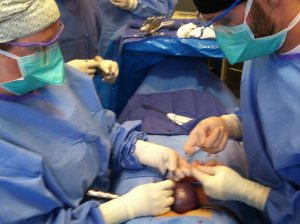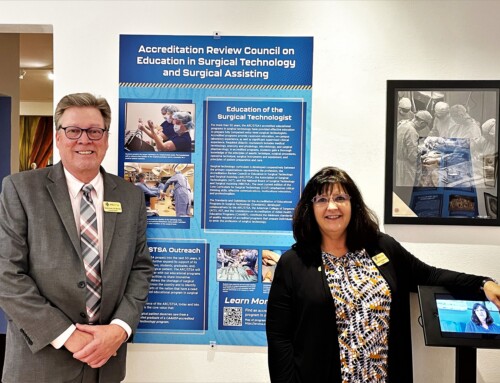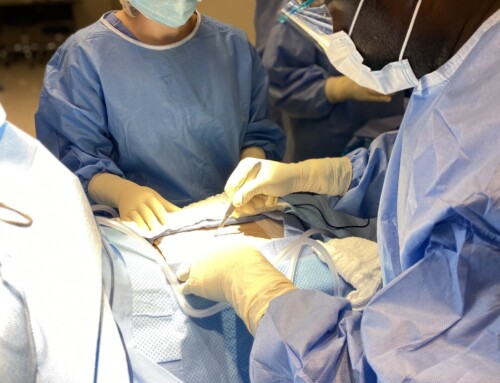What is Think Outside the Book?
Think Outside the Book is a series that features creative teaching techniques. In this edition, Crystal Warner, dean of surgical technology at Zenith Education Group, shares how she keeps her students prepared for anything – in real-time, at any time.
Trauma Alert
By Crystal Warner, Dean of Surgical Technology, Zenith Education Group
As instructors, we try to prepare our students as best we can to perform well in the operating room. We teach them aseptic technique and how to set up for a basic case, but what else can we do to prepare them for the reality of what it means to be a surgical technologist? I wanted my students to feel the adrenaline rush of being called in for a trauma, use critical thinking skills to anticipate what could go wrong during a procedure, be prepared to handle it and learn how to work as a team and communicate effectively in a high-stress situation. How do we simulate this fear, excitement and adrenaline rush in our surgical technology courses? Have students “take the call.”
Preparing for the Call Case
I rotate students through a call list each week. One student is assigned the surgical technologist role, one is the circulator, one is the first assist, one is the anesthesiologist and, if it is a larger class, I assign someone to be a student and have the surgical technologist act as the preceptor. I play the role of the surgeon during call cases. Students do not know when they will be called in for the emergency or what the case is, just that they are on call and that I may pick any procedure from the specialties we are covering that week in lecture.
The lab is prepped in advance. For some cases, I have used preference cards from our local hospitals, and sometimes I create my own preference card – it depends on what my lab inventory looks like at the time. I pull the items on the preference card and have them on a case cart (if you have multiple cohorts, have the beginners do a scavenger hunt to pull the items for the case), prepare our patient with one of my homemade simulations, put them on a gurney in a pre-op holding area, and then wait for the fun to begin.
I send a group text to the call team with the following information, “Trauma Alert, MVA, Exploratory Laparotomy, Poss. Splenectomy, 30 min. ETA.” Sometimes I send the text while the students are on break or in the middle of a lecture or quiz. Students on call are allowed to access to their phones only for that purpose.
The Clock is Ticking
Once the text is sent, I set an alarm for 30 minutes. Students know that when the alarm goes off, I will be standing there, ready to be gowned and gloved whether they are ready or not.
The team works together to open the case, and the nurse and anesthesiologist bring our patient to the room while the surgical technologist and first assist continue case set up. I try to make the flow as realistic as possible, to match a real operating room. The circulator is also responsible for prepping our patient, and I usually ask for a Foley catheter on all call cases – this is a great opportunity for students to refresh their skills.
Sometimes when we perform the procedure, our “patient” crashes halfway through and we have to do CPR to revive him. The fun thing about the call case is that you can go off script and throw in different scenarios to keep students engaged.
As they work through the scenario, the students realize how important each role is and how effective communication is key to having a smooth call case. Students who are not part of the call team take notes and watch for possible breaks in aseptic technique. Once the case is over, we discuss as a group what was done right and where we can make improvements.
Taking Matters into Their Own Hands
Shortly after I introduced my classes to this lab excitement, they started making up their own call cases to practice during open lab time. It was great seeing the students being so creative and working together.
When the students who have participated in these high-stress scenarios go to clinical, they are much more confident in their performance during stressful, real-life cases.
Do you use unique, engaging techniques in the classroom? Let’s hear it! Send your ideas to the ARC/STSA Director of Education Services, Christy Baily-Byers, at christy.bailybyers@arcstsa.net.




